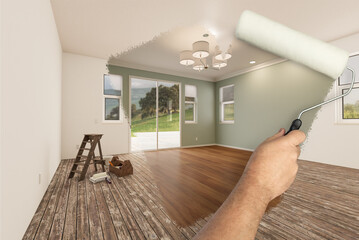
Foundation problems can cause all sorts of headaches for homeowners — uneven floors, cracks in the walls, sticking doors and windows. It’s important to choose the right repair method to ensure the stability of your home.
Piering uses steel piers that are driven into stable soil or bedrock to support your house, bypassing unstable areas of the earth. This is a more invasive option, but it provides long-term stability. Contact Foundation Repair Greensboro NC for more details.
Cost
Piering is a more expensive option than slab jacking, but it offers long-term stability. This type of repair transfers the weight of the home to stable soil or bedrock below shifting upper soil layers, so it provides permanent support. This makes piering ideal for structural foundation problems.
The installation process for piers is more time-consuming than slab jacking, so expect to pay more for this option. Your contractor must excavate around the perimeter of your foundation to install steel or concrete piers beneath the footings. Then, a pump is used to raise the sunken portion of your foundation.
While this method can restore the stability of your foundation, it doesn’t address underlying soil issues. If the surrounding soil shifts again, your foundation will need future repairs. This is why it’s important to consult a foundation repair specialist to assess the cause of your foundation issues.
Slabjacking lifts a sagging concrete slab by filling empty spaces underneath with injected material. This method is less expensive than piering, but it doesn’t fundamentally change how the structure bears its weight. It also relies on surface soil conditions improving or remaining stable.
Slumping and sinking foundations are caused by a wide range of factors. Poor construction, expansive clay soils, environmental changes, and even plumbing leaks can all lead to foundation damage. However, it’s important to weigh the pros and cons of each repair method before deciding on a solution.
Mudjacking and modern polyurethane injections can offer a temporary fix to foundation problems, but these repairs don’t address underlying soil issues. Additionally, these methods can be disruptive and costly. Piering, on the other hand, can provide a permanent solution for your foundation issues and increase the value of your home.
If you’re considering foundation repair, be sure to ask your contractor what the costs are for each type of service. Small projects involving crack sealing or localized patching may only take a few days to complete. Larger jobs, such as a full-scale piering project or underpinning in multiple areas, can take a week or longer. Regardless of the size of your project, your contractor will likely require a soil or structural engineer report. This will add to the total cost of your repair project, but it’s necessary to protect your home from further damage.
Time
Whether you’re dealing with minor cracks in your foundation walls or severe sinking of the concrete slab in your garage, basement, or patio, choosing the right repair method is crucial to maintaining stability and protecting your investment over time. But how do you know which solution to choose? Piering, also known as piling, involves driving steel piers into the ground to stabilize your home’s foundation. It’s a more invasive process that can take weeks to complete and may require you to temporarily relocate during repairs. Plus, it can cost more than other methods.
Slabjacking, on the other hand, uses a more streamlined process to lift sunken concrete slabs around your house. A specialized company drills holes in the sunken concrete and pumps in material that lifts it to a new level. The hole is then patched and your foundation is ready for use. Slabjacking is less expensive than piering and can be completed in a day or two. Plus, it doesn’t require excavation or demolition around your home.
Although slabjacking is a good option for lifting concrete porches that have settled independently from the house foundation, it’s not always suitable for other areas of your property. For instance, driveways, sidewalks, and patios may sink for a variety of reasons, including improper drainage or soil conditions. If they’re not addressed quickly, they can cause further damage and even create trip hazards.
In those cases, a concrete leveling or helical pier system is usually more appropriate. These systems are designed to permanently stabilize your concrete slabs and transfer the weight of your home to stable soil or bedrock, bypassing problematic layers of earth. Additionally, these systems are capable of supporting larger loads than traditional piering and can restore your concrete to its original elevation.
Both slabjacking and piering are excellent options for your foundation, but understanding the difference between them will help you determine which is the best choice for your unique situation. Piering is the most durable, long-term solution but can be more costly upfront. Slabjacking is a more affordable option but doesn’t address structural issues or prevent further damage.
Environment
When concrete shows signs of shifting, whether it’s a sidewalk or the foundation slab for your home, it can be incredibly concerning. Fortunately, there are methods to prevent these issues and get your concrete back to where it needs to be. One of these methods is slab jacking, which involves pumping a mixture under the slab that lifts it up. However, the other option is piering, a more invasive method that drives steel piers into the ground to provide support and stability. The right choice for you will depend on your circumstances.
Piering is ideal for structural issues and cases where the underlying soil cannot adequately support the structure. It is also a permanent solution, which means it will likely outlast the home itself. In addition, piering is less disruptive than other repair methods because the helical or push piers can be driven down hydraulically without requiring extensive excavation around your home.
On the other hand, slabjacking can be an effective solution for moderate settlement issues when the soil is stable. However, it doesn’t address the root cause of the problem and can lead to repeated movement in the future if the soil continues to shift.
To perform this process, the contractor will drill holes into your sunken concrete and pump in a material that lifts it up. The material will fill voids beneath the slab and transfer the weight of your home to stable soil or bedrock deep underground.
The primary advantage of slabjacking is that it’s much less expensive than piering and can be done very quickly. It also requires less extensive excavation of your property, which means less mess and landscaping damage. However, it doesn’t address the underlying soil issue that’s causing the sinking or shifting, so you may need to have it re-done in the future.
Piering is a more comprehensive method than slabjacking, but it’s also more expensive and time-consuming. To complete the process, the contractor will need to excavate the area around your home’s foundation to install helical or push piers. These piers are then driven down hydraulically to depths that meet specific load requirements. The piers will then transfer the weight of your home to stable soil, which will stabilize the structure and eliminate the need for further repairs.
Stability
Piering involves driving steel pipe pilings into the ground to stabilize a foundation, providing long-lasting support. This method is designed to solve structural problems and works best for foundations that have experienced substantial settlement. It can also be used to lift foundations back to their original level. This method is more invasive than other repair methods, and requires excavation around the foundation, but it offers a permanent solution that should outlast the structure itself.
Piers are typically made of galvanized or epoxy-coated steel and can be drilled into the soil using hydraulic equipment. They are then capped with a metal head assembly and connected to the foundation through a hydraulic jack. The piers are then tested to determine their capacity and the amount of pressure they can bear. The foundation is then shifted onto the piers, lifting it to its original height. This method is ideal for homes built on expansive clay or soil and can also be used to lift sagging concrete slabs.
Slabjacking is a less invasive method of raising and stabilizing a sunken foundation. During this process, a mixture of cement, soil, and water is pumped beneath the slab. This material, known as slurry, fills the voids under the foundation, which in turn raises the slab to its original level. This technique is also commonly referred to as mudjacking or polyurethane jacking.
Slabjacking is not intended to address serious structural issues or ongoing settlement, but it can be an effective short-term solution in many situations. It can be used to lift sagging concrete slabs, and it is typically more cost-effective than piering. However, it may not provide a permanent solution and is often dependent on the underlying soil conditions remaining stable. If the underlying soil is not capable of supporting the weight of the slab, further damage will occur. This is why piering is often the preferred method for foundation repair, especially in cases of significant settlement and structural failure. It is also the best option when the home needs to be lifted back to its original position. It’s important to understand the different processes involved in these repairs so that you can make the best choice for your home.




